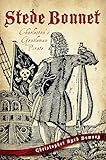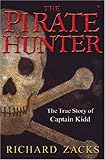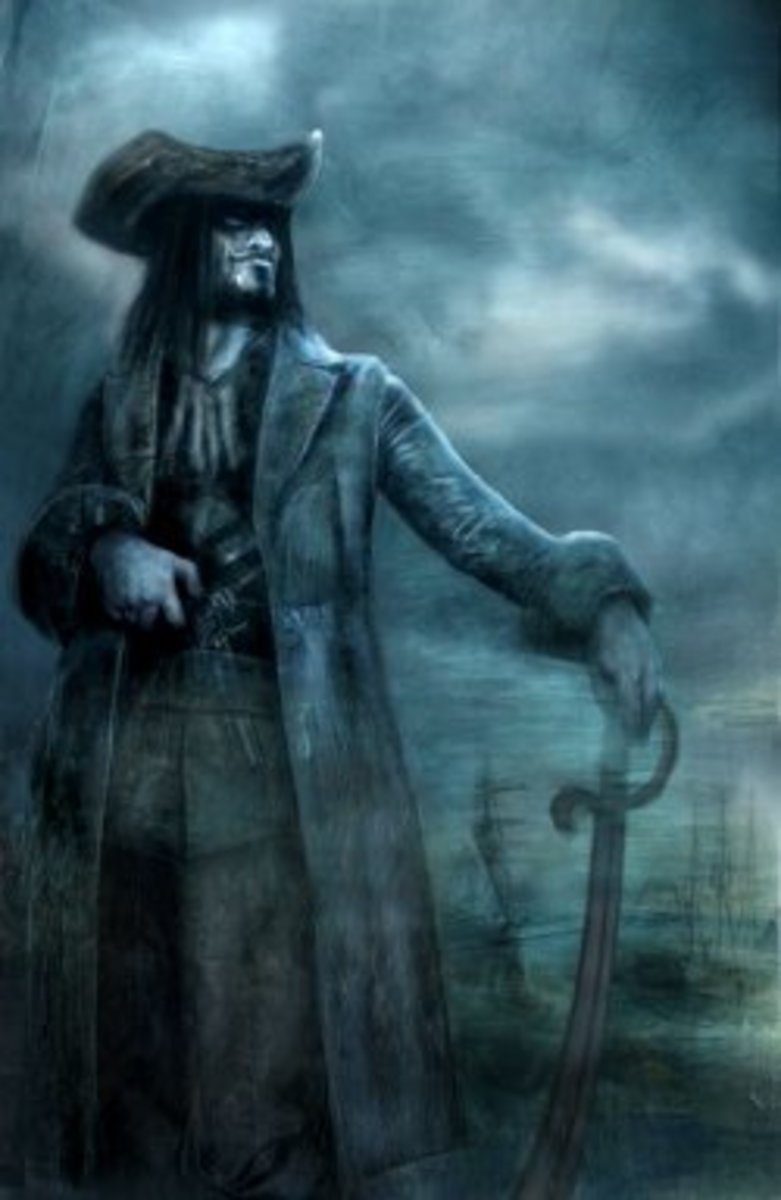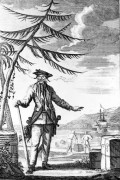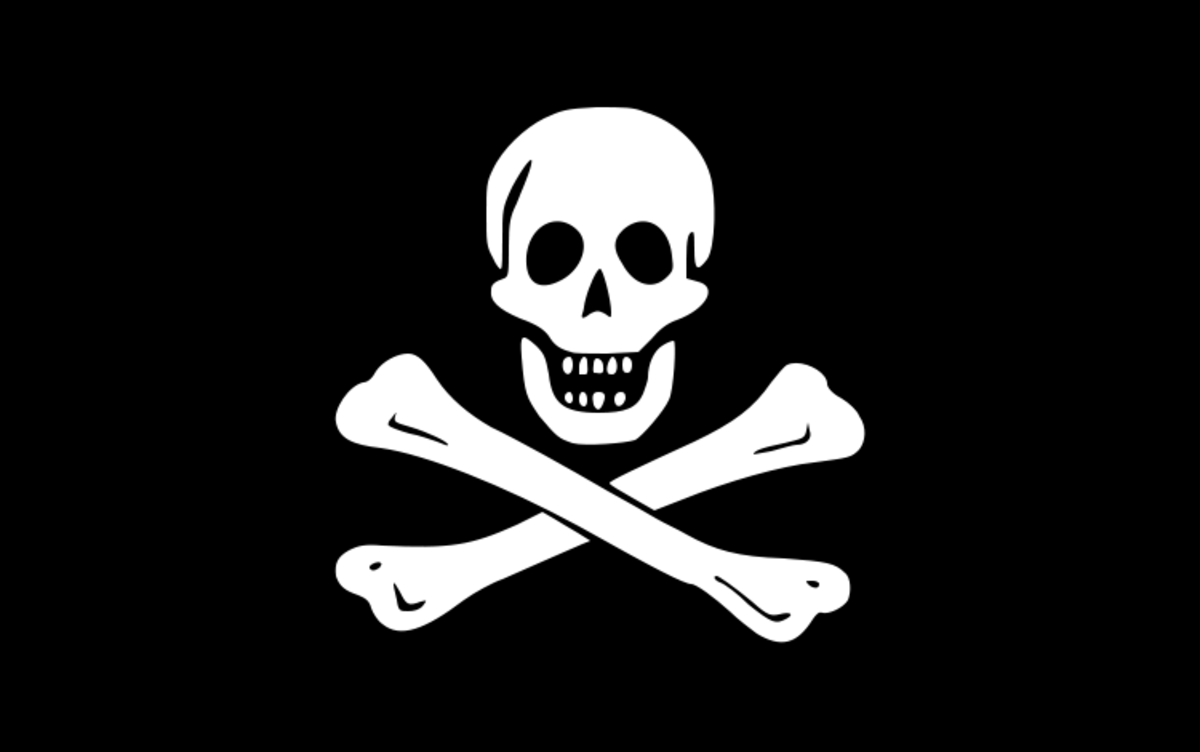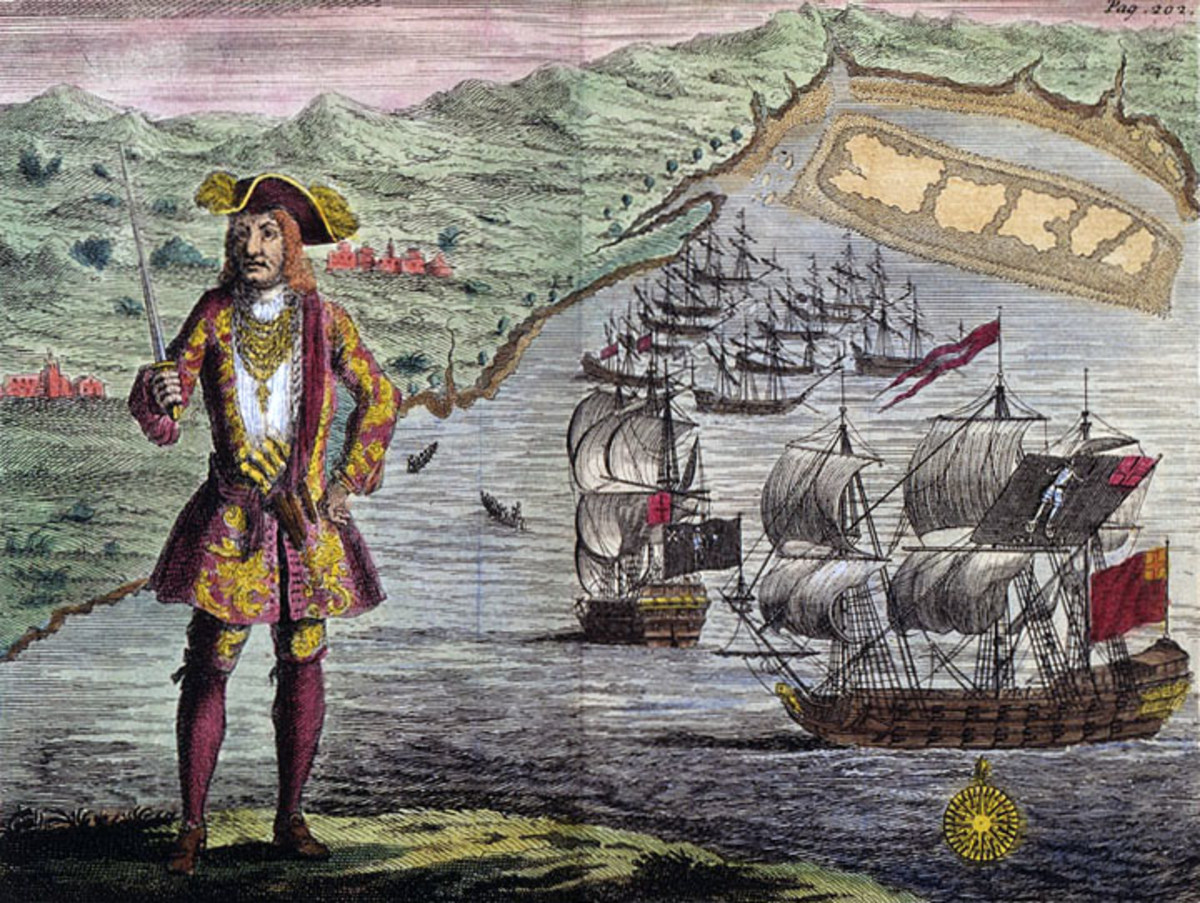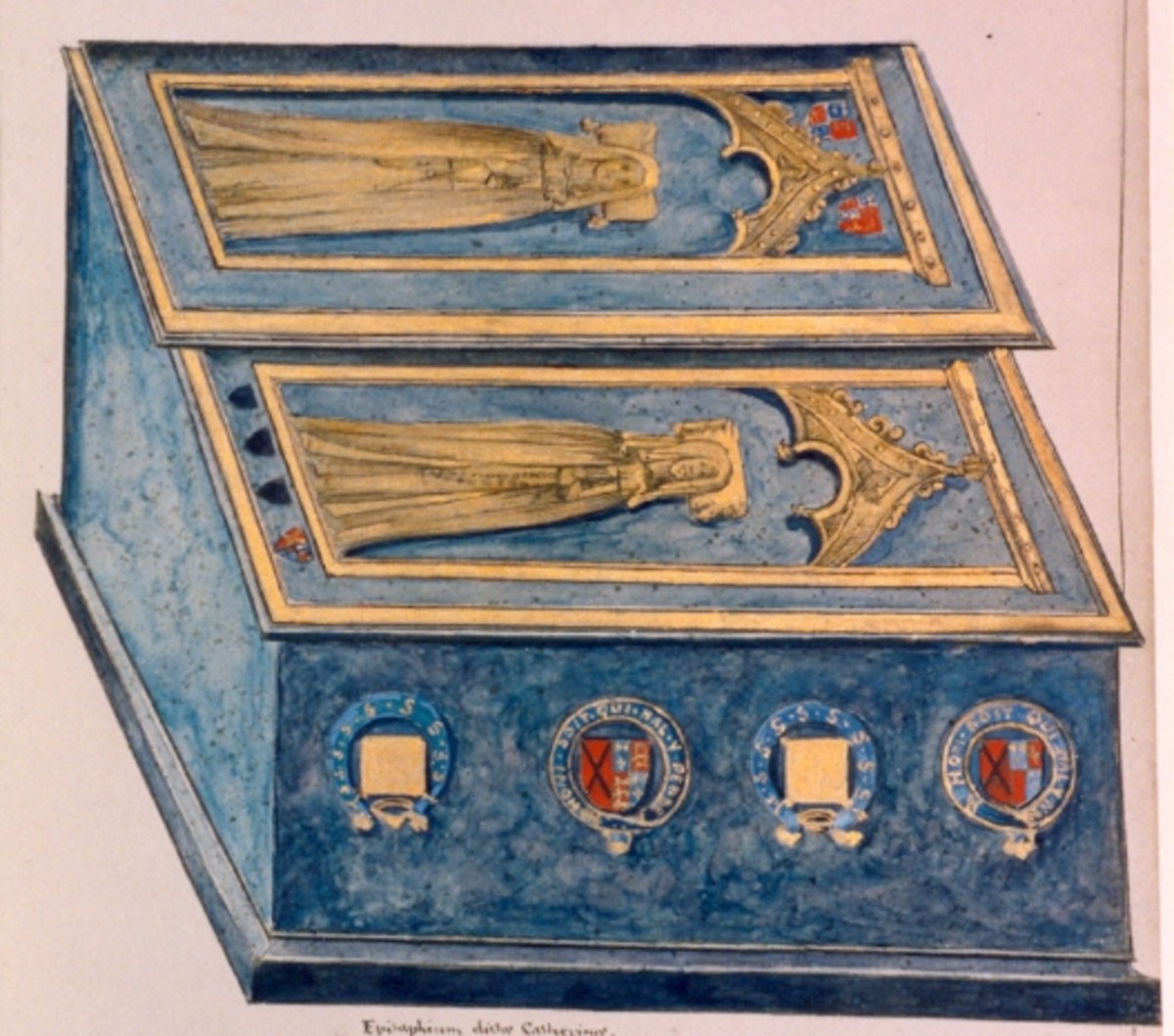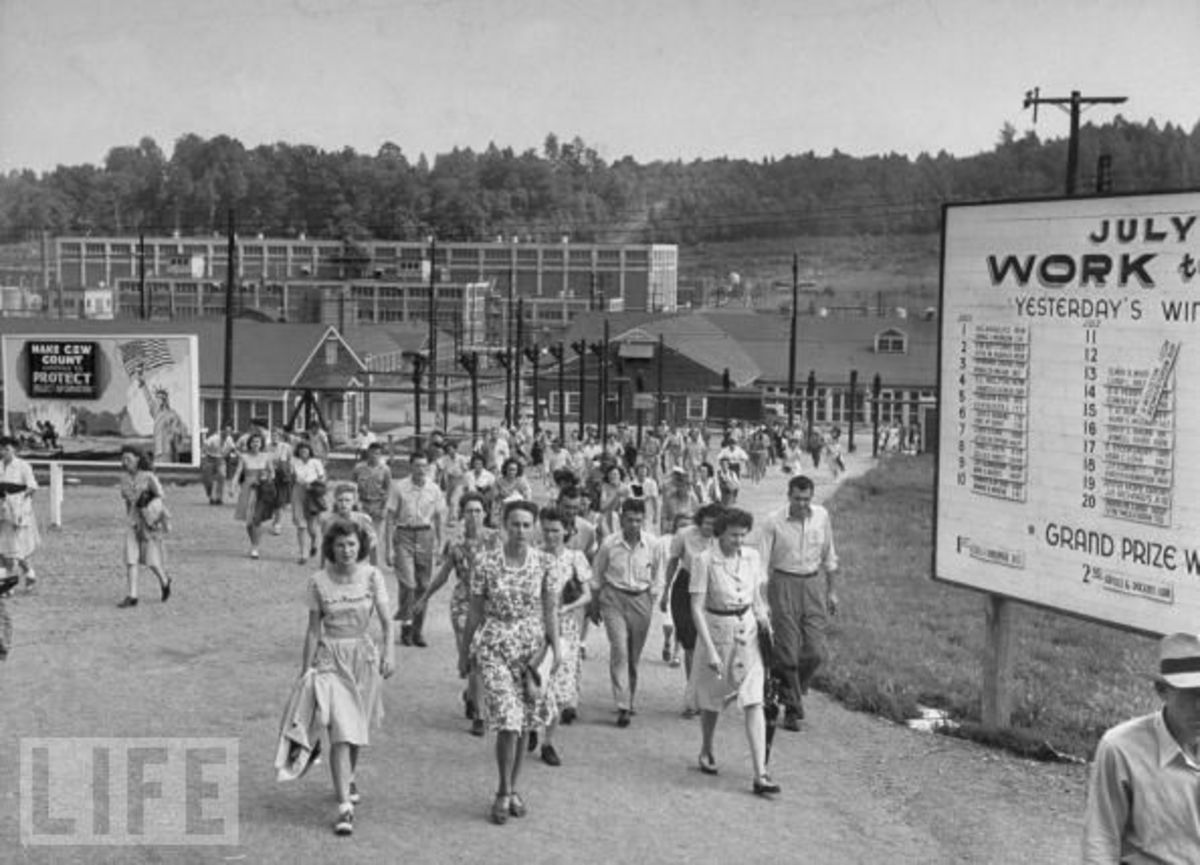The Pirate Page
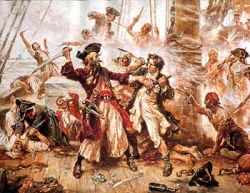
Pirates of the Golden Age
The Golden Age of Piracy lasted from about 1700 to 1725, until Royal pardons and pirate hunters brought it to an end. Some pirates began as privateers, commissioned by their governments to hunt down enemy vessels. Others mutinied against bad leaders or deplorable conditions on their own ships.
Some were forced into piracy, others chose it willingly. Not all pirates buried their treasure, and not all met their end on the hangman's noose - some of them actually died of old age. A couple of them were even women, as ruthless and fierce as the men they served with. Would you like to learn more about some famous pirates who terrorized the seven seas? Then read on.
"The chief weapon of sea pirates, however, was their capacity to astonish. Nobody else could believe, until it was too late, how heartless and greedy they were."
Kurt Vonnegut (1922-2007)
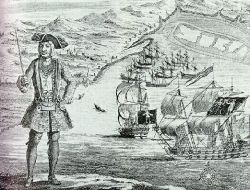
Bartholomew Roberts - "Black Bart"
Black Bart was a Welsh pirate active from 1719 to 1722. During his years of piracy it is estimated he captured more than 470 vessels, making him the most successful pirate. The articles he and his crew agreed are now known as the pirate code.
He began as a mate on a slave ship that was captured by pirates in June 1719. Roberts joined the crew, and became captain after only six weeks. He was a dashing figure and had a love of fine clothing and jewelry. He was tall, dark, and handsome, preferred tea to rum, but was known for his brutal torture, earning him his dark name.
When he captured a ship and discovered the governor of Martinique was on board, he had him hanged, tortured and murdered the crew, and took the vessel and made it his flagship. The British navy tracked him down in 1722 and he was killed in battle. Not wanting his body hung out as an example to other pirates, his crew pitched it into the sea. His death is considered the end of the Golden Age.

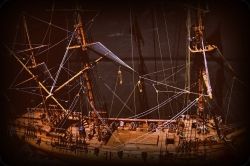
Sam Bellamy - "Black Sam"
Black Sam was born in England. He chose a life a sea, making his way to the colonies in North America. He was called Black Sam because he did not wear the powdered wigs so fashionable at the time, choosing to wear his long, black hair tied back in a ribbon. He was known to be merciful and generous to his victims, earning another name, "Prince of Pirates."
He was the top-earning pirate in history, although his career lasted less than a year. He served under pirate Benjamin Hornigold, also an Englishman, along with Edward "Black Beard" Teach, but when Hornigold refused to attack English ships, Black Sam was elected as captain. After haunting the waters of the Caribbean, he died off the coast of Cape Cod in a storm. In 1984, Black Sam's ship, the Whydah Galley, was the first pirate shipwreck to be found in North America. It sank carrying the largest hoard of pirate plunder ever captured: indigo, ivory, and over 4 tons of gold and silver. It is now on display at The Whydah Pirate Museum, in Provincetown, Massachusetts.
Samuel Bellamy's Treasure Ship
- Whydah.com
Check out the shipwreck of the Whydah Galley for yourself

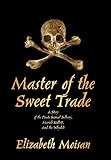
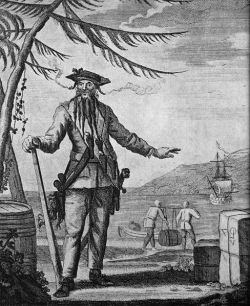
Edward Teach - "Blackbeard"
Blackbeard, one of the best known pirates, created the pirate stereotype. He was an Englishman, tall with broad shoulders and a booming voice. He was known to light cannon fuses and tuck them into his hat before engaging a vessel. With smoke curling around his long, black beard, he made a fearsome appearance.
Known for his cruelty, he was called "the Devil's brother." He started out as a privateer based in Jamaica, but he turned to piracy, plundering ships travelling to and from the American colonies. His reputation spread quickly; those who did not surrender were punished, and those who did not surrender quickly were punished more severely.
Blackbeard did accept a pardon, buying a home and even marrying, but the life of piracy was too appealing. Declared a privateer, he plundered ships in North Carolina under his commission until the governor of Virginia put a bounty out for his capture - alive or dead. Pirate hunters tracked him down and he was killed in a ferocious battle on November 22, 1718. He was decapitated, and his headless body was thrown into the sea. Legend has it that his treasure is buried somewhere along the eastern sideboard.
Check out these Blackbeard links.
- Blackbeard Lives!
Check out the life of Blackbeard in this interesting timeline of his adventures. - The Queen Anne's Revenge
Artifacts from Blackbeard's ship, the Queen Anne's Revenge, reveal the world of pirates in the Golden Age.
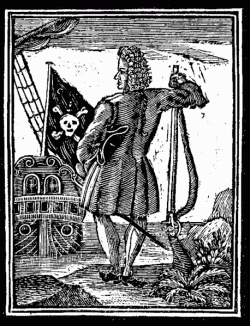
Stede Bonnet - The Gentleman Pirate
Stede Bonnet was born into wealth on the island of Barbados. Although he Inherited his father's estates and married a local girl, he turned to piracy in 1717. He left behind four children amidst rumors of marital unhappiness. He is one of the few pirates said to make his victims walk the plank. He was not a very good sailor. He hired able officers to run his ship, had a crew that did not respect him, and preferred his comfortable cabin filled with books.
He met up with Blackbeard in Nassau, New Providence after unsuccessfully attacking a ship that left half his crew dead. Bonnet's crew begged Blackbeard to take over command of the ship, which he did, "inviting" Bonnet onto his own vessel. Although a virtual prisoner, it seemed Blackbeard took a genuine liking to Bonnet. Later on Blackbeard would double-cross him out of his loot and men. Bonnet accepted a pardon in the summer of 1781, but returned to a life of piracy before summer's end. He was captured, brought to trial, and hanged in Charleston on December 10, 1718.
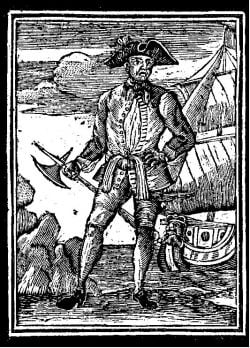
Edward England
Edward England was born in Ireland, and his claim to pirate fame was that he only killed captives when necessary, marking him as different from pirates of his day. He was introduced to piracy when the ship he was a mate on was captured. Forced to join the pirate crew, he soon had command of his own ship.
He operated in the Indian Ocean off the African coast in 1720, plundering slave ships. Conflict ensued when England ordered the life of a captured captain spared. His disgruntled crew mutinied and marooned him on the island of Mauritius with two other crew members. They built a small raft and made it to a bay in Madagascar. Penniless and begging for his food, he died in 1720.
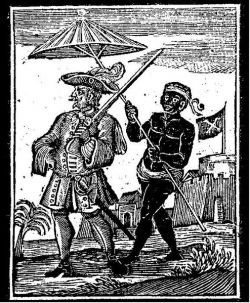
Henry Avery - "Long Ben"
Henry Avery was a pirate who had the distinction of not being arrested or killed in battle. He was called Long Ben because he was so tall. He was born in Plymouth between 1653 and 1659, and was behind the greatest pirate raid in history. His career as a pirate lasted only two years, but his exploits caught the imagination of the public, making him famous and inspiring others to a life of piracy.
After serving with the Royal Navy, he took up slave trading along Africa's slave coast. When the owner of his ship failed to pay the crew, they mutinied, with Long Ben in the lead. In 1695, they sailed to the Arabian Sea and met up with the Grand Moghul of India's treasure ship. Although they were outgunned, they couldn't resist attacking, and after a battle that lasted hours, they captured the ship.
Several days of torture and rape of the Muslim women ensued, with a payoff of hundreds of thousands of pounds in precious metals and jewels, including 500,000 gold and silver pieces, a treasure today worth some $400 million. Now the richest pirate in the world, and with a bounty on his head, he fled to the Bahamas, where his crew adopted aliases and Long Ben disappeared from history. Although he probably lived out the rest of his life in quiet retirement, legend has him retiring to Madagascar with his loot and an Indian princess, ruling as a pirate king.
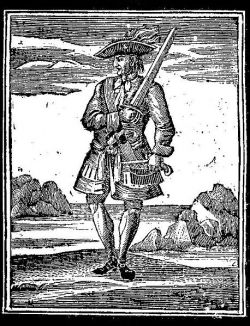
John Rackham - "Calico Jack"
Calico Jack Rackham earned his name for the bright Indian Calico cloth he liked to wear. He was not the most successful pirate, but his claim to fame was having two famous female pirates under his command, Anne Bonny and Mary Read.
He attacked mostly fishermen and lightly armed traders in the Bahamas and Cuba between 1717 and 1720. He refused the pardon offered by governor Woodes Rogers of Nassau, and chose to serve under notorious pirate Charles Vane. He is remembered for his design of the Jolly Roger, a skull above two crossed swords.
He did accept a pardon in 1719, but returned to piracy with Anne Bonny at his side the next year. Known for his ruthlessness, after a short run he was tracked down by pirate hunter Jonathan Barnet and hanged in 1720 in Port Royal, Jamaica. His body was hung in an iron cage called a gibbet as a warning example to other pirates.

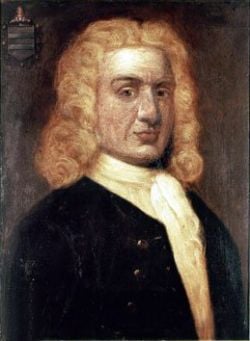
William Kidd - Captain Kidd
Captain Kidd was born in Scotland around 1654 and is the only pirate known to bury treasure. He began as a privateer in 1689, commissioned to attack pirates and French vessels. Married to a wealthy widow, and connected to the governor of New York, Kidd had a promising career at sea. What made him turn to piracy?
Setting sail for Madagascar, Kidd found very few enemy vessels to plunder and about a third of his crew died from disease. Unrest among the crew forced his hand, and in August 1697, he attacked a convoy of Indian treasure ships. He was driven off, but this was considered an act of piracy. About this time, he also killed a mutinous member of his crew, William Moore.
In January 1698, he attacked another treasure ship captained by an Englishman. Kidd made off with the cargo and took the captured ship as his own, claiming the ship sailed under French papers. News of his piracy reached New York, and he was arrested upon his return. Rather than come to his aid, his powerful friends distanced themselves from the controversy, and Captain Kidd was sentenced and hanged in May 1701, claiming innocence up to the end. His body was placed in an iron cage as a warning to other pirates.
Hearing he was wanted for piracy, Kidd had buried his treasure on Gardiner's Island off New York. It was retrieved, but Kidd insisted he had buried more of his loot somewhere in the "Indies," leaving behind a legacy of buried treasure that has been popularized in fiction. An actual treasure has never been found, but in 2007 it is believed his ship, the Quedagh Merchant, was found off the coast of the Dominican Republic. Captain Kidd's cannon is on display at The Children's Museum of Indianopolis as part of National Geographic's Treasures of the Earth exhibit.

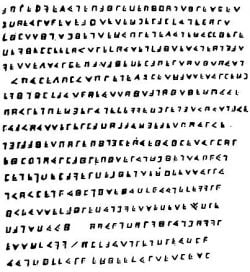
Olivier Levasseur - Oliver La Buse (the Buzzard)
Olivier Levasseur was a French pirate called La Buse - the Buzzard - for the speed with which he attacked. His legacy was an undeciphered, cryptic message he claimed led to unfound treasure. During the Spanish War of Succession (1701-1714) he sailed as a privateer for the French Crown. Ordered to return home when the war ended, La Buse turned to piracy.
Despite an eyepatch over a damaged eye, he was a good sailor and leader, and he successfully looted in the Indian Ocean. One of piracy's greatest exploits was the capture of a Portuguese vessel called Nossa Senhora de Cabo, or Our Lady of the Cape. It was laden with a treasure of gold, diamonds, pearls, silk, and valuable art and religious objects worth millions, including the Flaming Cross of Goa, a golden cross encrusted with precious gems that took three men to carry.
La Buse later tried to negotiate a pardon offered to all pirates in the Indian Ocean, but he would not give back any of the stolen loot. In July 1730, he was hanged for piracy. According to legend, when he stood on his scaffolding he threw a golden necklace into the crowd while exclaiming, "Find my treasure, ye who may understand it!" The necklace, which contained a cryptogram, was never found, but legend of his treasure persists.
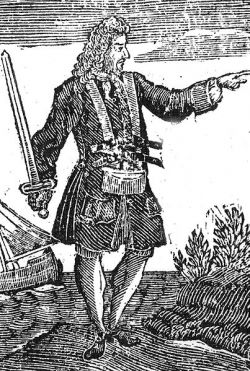
Charles Vane
Charles Vane was a pirate who loved piracy. He refused to compromise and never accepted a pardon. He arrived in Port Royal during the War of Spanish Succession, and was known for his cruelty to captives despite their surrender. He began serving under pirate Henry Jennings, who headed to the wreck of a Spanish treasure fleet. Spanish salvagers had set up a camp near the wreck. Under Jennings, Vane raided the camp, and they escaped with the plunder of gold and silver worth more than $3.5 million.
In 1718, the King of England offered a pardon for all pirates, but Vane refused it. Others who also refused collected together under his leadership, including Edward England and Calico Jack Rackham. Hearing of the arrival of governor Woodes Rogers, who was commissioned to rid the Caribbean of pirates, he entered Nassau. He took over the town, even hoisting a pirate flag from the fort. Hot-headed Vane fired at the governor's ships when Rogers arrived, but he ended up fleeing Nassau when he realized it was fight he wouldn't be able to win.
He met up with Blackbeard in North Carolina and tried to convince him to join in reclaiming Nassau as a pirate haven, but Blackbeard saw the risk was too great; he was operating under his privateering commission and refused to get involved. Giving up Nassau, Vane continued looting until his fleet of ships was hit by a hurricane. He found himself stranded on a small island for a few, miserable months until his rescue by a passing ship. Although he gave a false name, he was recognized, and was brought in chains to Spanish Town, Jamaica to face trial for the crime of piracy. He offered no defense, and in March, 1721, he was hanged at Gallows Point in Port Royal. His body was hung from an iron cage as a warning to other pirates.
When I see the elaborate study and ingenuity displayed by women in the pursuit of trifles, I feel no doubt of their capacity for the most herculean undertakings.
Julia Ward Howe (1819 - 1910)
Famous Female Pirates
Not all pirates were women. The two most famous female pirates were friends, both serving under Calico Jack Rackham. Together, their exploits have inspired literature, art, and songs.
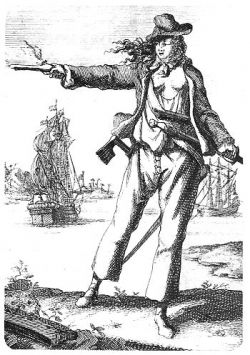
Anne Bonny
Anne Bonny was the illegitimate child of a lawyer and his maid. The affair was a scandalous one, but her father was fond of her and wanted to bring her into his home. What could he do? Dress her as a boy and pass her off as the son of distant relatives of course.
Her parents brought her to the new world, and it was here that her mother died. Bonny was said to have fiery red hair and a temper to match. Legend has her stabbing a servant girl with a table knife when she was thirteen. Her father was a rich man, and she was expected to marry well, but she chose a poor sailor instead and found herself disowned. Her husband made a meager living turning in pirates for their bounty. The luster of her marriage worn off, she ended up leaving her husband for Calico Jack Rackham and a life at sea as a pirate.
She became companions with Mary Read, another famous female pirate on Calico Jack's ship, the Revenge. Read also dressed as a man, and legend has it Calico Jack was jealous of their closeness and threatened to kill Read, forcing her to reveal her true gender. Relieved, Calico Jack allowed her to remain part of his crew. It is said when Calico Jack's ship was cornered, Bonny and Read fought fiercely while most of the crew hid below deck. Her last words to Rackham were she was "sorry to see him there, but if he had fought like a Man, he need not have been hang'd like a Dog."
Bonny was convicted to be hanged, but she declared that she was pregnant, and her execution was stayed. Her father may have used his connections to have her freed, and rumors have her remarrying, having many children, and living to the respectable age of eighty.
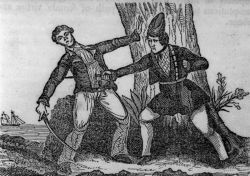
Mary Read
Like Anne Bonny, Mary Read was also illegitimate. She was born to the widow of a sea captain. Read had an older brother who died when he was young. Seeking to hide Bonny's existence, her mother dressed her as a boy and passed her off as Bonny's older brother in order to receive support from her husband's family.
Read kept dressing as a boy, and as a young "man" found employment on a ship in Holland. She fell in love and married a Flemish soldier and together they ran an inn until her husband's early death. Finding herself a widow, she put men's clothing back on and joined the military. However, during times of peace, there was no work, and so she traveled to the West Indies. Her ship was captured and she was forced to join the pirate crew. She took the King's pardon and accepted a commission to privateer, but she ended up in mutiny along with the crew and she returned to piracy.
In 1720, she met up with Anne Bonny, and she joined Calico Jack Rackham on their ship, the Revenge. When their ship was captured, Read was tried for piracy and faced execution. She "pleaded the belly", claiming pregnancy, along with Bonny. Her execution was stayed until her baby could be born, but she died in prison from a fever. There is no record of the baby's burial, but official records say it was a fever associated with childbirth.


